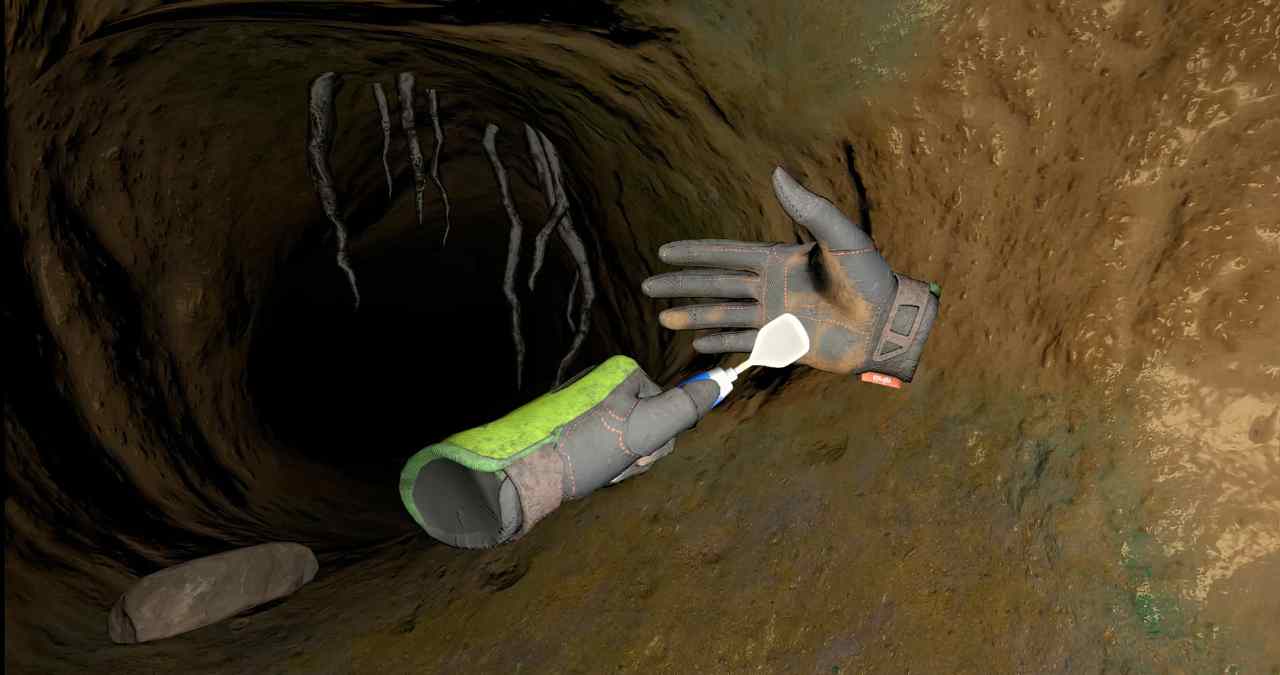A Cave Exploration Game That Doesn’t Stick to One Genre
Cave Crave isn’t trying to fit neatly into a single category. Built for Meta Quest headsets, this VR project blends simulation, guided exploration, and psychological horror , all using the same cave systems. It’s an unusual mix that leans into how differently people react to underground spaces.
The game is currently in development but already sets itself apart by giving players three clearly defined modes. Whether you want a slow tour, a high-stress crawl, or a near-realistic speleology sim, Cave Crave puts them all on the same map.
Professional Mode Focuses on Technical Cave Navigation
This mode is built like a sim. Players use climbing gear, ropes, lights, and even mapping tools to navigate tight passageways and vertical drops. It’s a slower-paced experience, more about methodical movement than instant feedback. There’s no narrative or pressure, just gear-based progression and physical VR interaction.
It doesn’t aim for full realism, but the focus on climbing physics and proper rope use brings it closer to something like The Climb mixed with tactical spelunking. This version is clearly made for players who want to treat the cave as a puzzle or obstacle course, not a ride.
Tourist Mode Offers a More Relaxed Experience
In contrast, Tourist Mode dials everything down. No tight spaces, no risk, no heavy gear. Players walk through an expanded version of the cave system with wider passages, scenic lighting, and ambient soundscapes. It’s the mode you give to someone who just wants to explore without stress.
There’s still interaction — you can shine lights around, look at cave formations, take photos, but it’s more of a walking sim in underground form. It sits somewhere between educational and atmospheric, with no pressure or progression beyond simple discovery.
Horror Mode Uses Claustrophobia and Darkness as Weapons
Then there’s Horror Mode, which drops the climbing tools and replaces calm with dread. This isn’t about jump scares or monsters. Instead, it leans into psychological pressure. The cave layout stays mostly the same, but the lighting, audio design, and navigation tools change. You’re isolated, light sources are limited, and the sense of space begins to warp.
VR makes this type of experience hit harder. Narrow tunnels, low ceilings, and muffled sound design are used to amplify discomfort. There’s no overt antagonist, but the cave itself becomes the threat. It’s an ambient horror setup that shares DNA with titles like The Forest’s cave sequences or the more grounded parts of Alien: Isolation.
A Single Map, Three Perspectives
What ties all these modes together is the reuse of the same cave system. Each experience overlays different mechanics on top of a shared space, which is a smart way to maximize assets without repetition. It also gives players a reason to re-enter familiar areas under completely different conditions
The dev approach here isn’t about one core gameplay loop. It’s more about showing how one setting can feel radically different depending on context. And that’s something VR is uniquely good at delivering.
Cave Crave Is a Niche Concept That Leans Into Its Format
This isn’t a crowd-pleaser, and it’s not meant to be. Cave Crave seems designed for people who either want an authentic caving sim or a focused horror setting that doesn’t rely on traditional scare tactics. The addition of a no-stress tourist option just rounds it out.
If it sticks the landing, it could quietly carve out space in the VR ecosystem as a multi-angle exploration experience — less about content volume and more about how environment and mechanics shift when your mindset changes.
Virtual Reality Explorer & Game Reviewer
Always the first to plug in. VRSCOUT dives head-first into the most immersive VR worlds, analyzing mechanics, comfort, innovation, and that elusive “presence” factor. If he says it’s worth it, it probably is.




